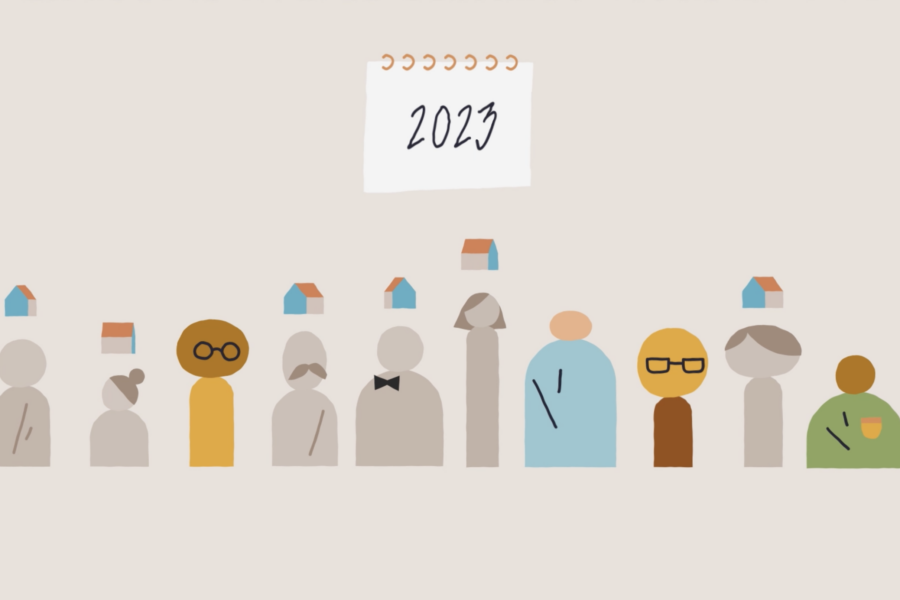Every year, communities that receive federal funding for homelessness conduct an annual count of people experiencing homelessness on a single night, called the point-in-time count. The point-in-time (PIT) count is meant to serve as a snapshot of homelessness in a community and to provide a sense of the overall scope of homelessness in America.
Every other year, communities must conduct a count of unsheltered people experiencing homelessness. Some communities opt to do a count of unsheltered homelessness, even during the years it is not mandated, to provide a fuller picture of homelessness in their community.
Annually, communities are required to do a count of people experiencing homelessness who are sheltered in emergency shelter, transitional housing, and safe havens on a single night.
These counts are conducted by a Continuum of Care, a local or regional planning organization that receives federal funding and works to coordinate efforts to end homelessness. Continuums of Care rely on groups of volunteers to conduct the count, which often occurs in late January.
The Department of Housing and Urban Development (HUD) offers different methodologies that communities can use to conduct the point-in-time count — for example, a census count, sampling and extrapolation, or a combination. These methodologies, and how they are implemented, are subject to variability across local contexts and from one year to the next. As one example, a study conducted in 2016 looked across three cities (Houston, Denver, and New York City) and found that the amount of resources and volunteers invested in the point-in-time count varied widely, significant variation in how the count was conducted, and the use of different survey instruments.
During 2020, the United States Government Accountability Office recommended quality assurance checks on the PIT count methodology data that Continuums of Care submit and take actions as appropriate to ensure that HUD’s standards for conducting valid and reliable PIT counts are met.
How is the point-in-time count reported and used?
The point-in-time count is the only mandated count of all people experiencing homelessness that happens annually across the country.
With that, community stakeholders have been equipped with yearly estimates to track trends at a large scale — both locally and nationally — over periods of time. The event is often a significant undertaking in terms of coordination and execution for any community, which involves staff within the homeless response system and the local Continuum of Care, as well as volunteers.
The results of the point-in-time count are reported each year to Congress in the Annual Homeless Assessment Report (AHAR). The AHAR is usually published by HUD about a year after the point-in-time count is conducted.
This report also contains data on communities’ housing inventory, including all bed types — emergency shelters, transitional housing, permanent housing, and any other subsidy-based housing. This report, called the Housing Inventory Count (HIC), is meant to give a sense of each communities’ current housing capacity.
The Annual Homeless Assessment Report and the aggregated data from the PIT and HIC contained in it are often used to inform decisions about homelessness funding, policy recommendations, and research.
What other kinds of data do communities use to understand and solve homelessness?
The point-in-time count allows communities to employ different methodologies to provide an aggregate, anonymized snapshot of homelessness on a single night. Studies have suggested that the results of the count can miss large segments of the homeless population, fluctuate year over year, and be unreliable for making comparisons across communities or time.
In order to solve homelessness, communities need both person-centered data and a dynamic view of the problem at a population level, and how it is changing.
Since homelessness is a dynamic problem that changes every day, communities working to reduce homelessness also rely on comprehensive, person-centered, real-time insights that are more akin to a video, compared to the snapshot view provided by the point-in-time count.
Communities across the country are developing data systems that can offer a clear picture of who is experiencing it at any given time, including details on who each of those individuals are and what supports they need to exit homelessness. In order to solve homelessness, communities need both person-centered data and a dynamic view of the problem at a population level, and how it is changing.
Achieving this kind of real-time, comprehensive, and quality data has long been proven possible in other fields like public health. In the past few years, communities across the country have proven that it is possible to achieve a more rigorous and meaningful understanding of homelessness in their community.
By-name data is a real-time, person-specific list of everyone experiencing homelessness — including those who are sheltered and unsheltered — which provides communities with a full and up-to-date view of homelessness in their geography.
By-name data is updated in real time (at least monthly) and helps communities answer important questions like:
- How many people became homeless for the first time this month?
- How many were people returning to homelessness?
- How many people exited from homelessness?
- Are the experiences of people moving through the system equitable?
Specifically, communities can look at the following data points:
- Inflow: When a person enters into homelessness
- Actively homeless: People who are currently experiencing homelessness
- Outflow: People who have exited homelessness
Using this data, communities are able to better serve individuals by providing tailored solutions to fit their individual needs, understand the broader patterns of homelessness in their area, and more effectively allocate resources and efforts toward ending homelessness locally.
Some communities have a public dashboard showing their progress using real-time, by-name data. Here’s an example of a public dashboard from Charlotte-Mecklenburg County.





